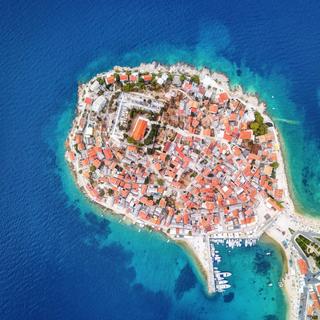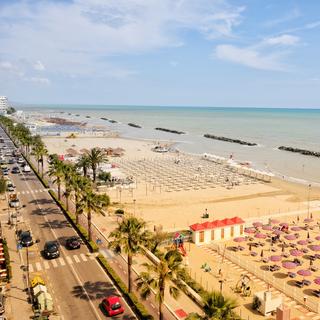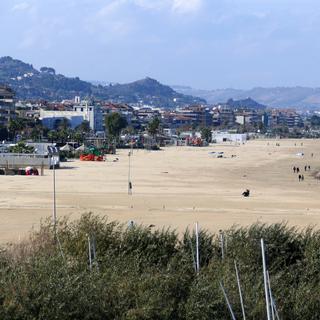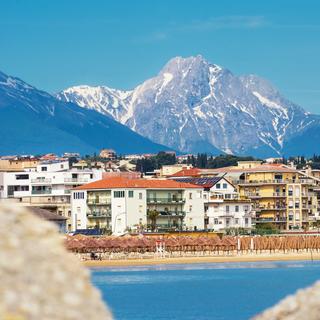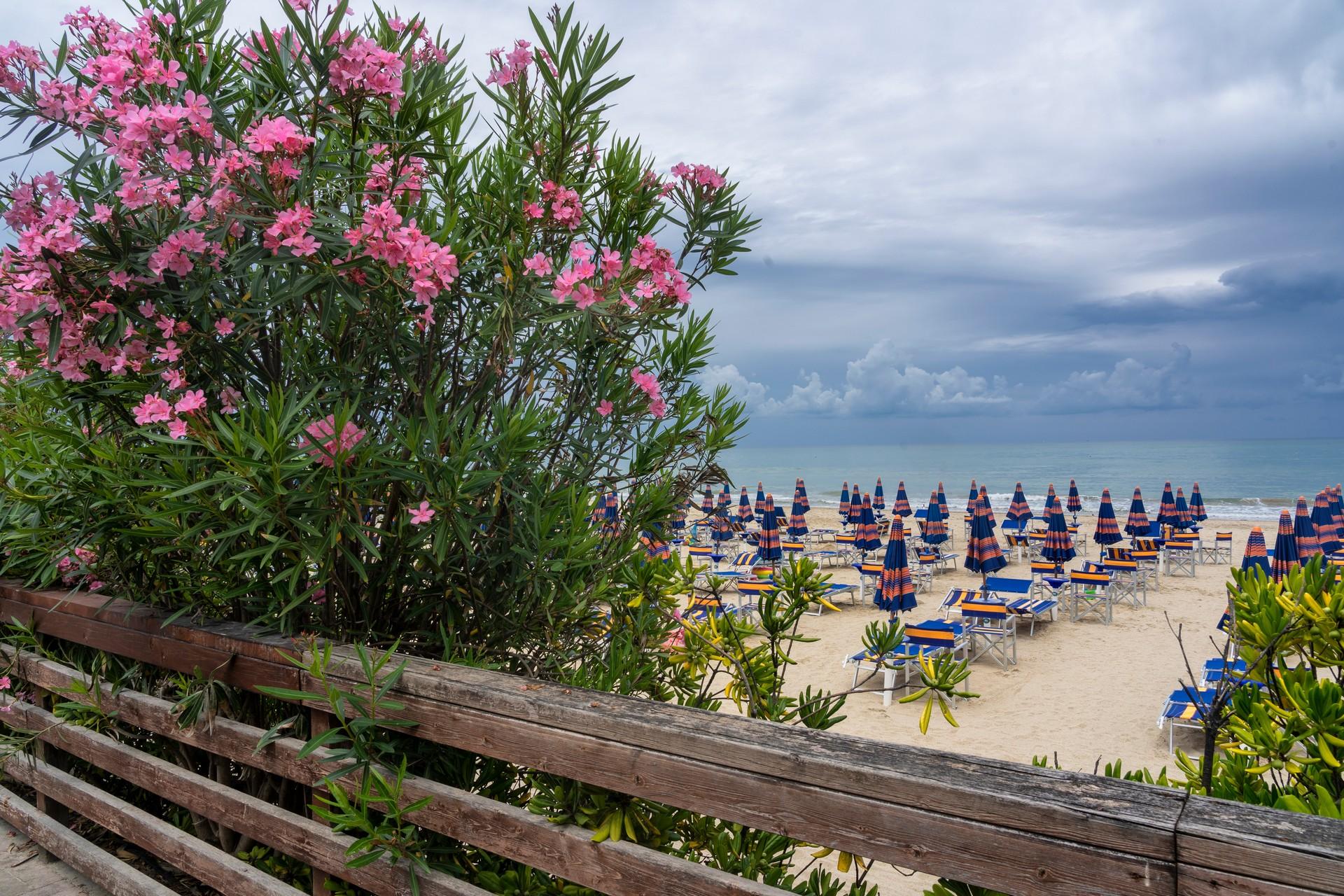
Giulianova weather and climate

Giulianova weather and climate
Day
29 °C
Night
19 °C
Sea
25 °C
Precipitation
38 mm
in month
Rainy days
5 days
in month
Daylight
15 hours
average
Sunshine
10 hours
average
Humidity
68 %
Weather charts for Giulianova

Find more destinations like this
Destinations with similar weather to Giulianova
Other destinations in Abruzzo - Italy
Closest cities for Giulianova
Weather overview for Giulianova
Weather overview
Giulianova, situated in Italy, boasts a climate that is generally mild and pleasant. Throughout the year, the temperatures vary considerably. During the peak of summer in July, one might experience daytime temperatures soaring up to 29 °C (85 °F), whereas the chilly nights of February can drop to a low of 3 °C (37 °F). Daytime temperatures begin at a modest 10 °C (49 °F) in January. The driest month is July, which typically has about 5 days of rainfall, in stark contrast to the wettest month, November, which sees as much as 11 days of rain. The sea experiences a range of temperatures as well, from a cool 12 °C (54 °F) in March to a warm 25 °C (78 °F) in August. Moreover, the town witnesses measurable wind speed fluctuations, with maximums reaching 3 m/s in March, and minimums around 2 m/s in October. Humidity varies too, peaking at 78 % in November and reaching lows of 68 % in July, thus contributing to the overall comfort of the locale.
January weather
As January arrives in Giulianova, the sea temperature dips to 13 °C (56 °F), aligning with the day's lower temperatures, which bottom out at 10 °C (49 °F). With the settling of the rainy days count to 8 days and the rainfall amount stepping down to 48 mm (1.89 in), a reduction in precipitation is evident. The nighttime chill intensifies, reaching 3 °C (38 °F).
February weather
The hint of spring's arrival in February brings with it a slight increase in daytime temperature, registering at 11 °C (52 °F), and the sea feels slightly cooler at 12 °C (54 °F). The frequency of rainy days rises incrementally, and the sun starts to assert itself more, shining for 4 hours. The cold of night hits its lowest note this month, displaying a temperature of 3 °C (37 °F).
March weather
March marks the period of the lowest sea temperature, a chilly 12 °C (54 °F), yet the day progressively warms up to 14 °C (56 °F). The trend of increasing rainfall begins to take shape. As daylight extends, sun hours also increase to 5 hours, and the nights start to grow milder with a temperature shift upward.
April weather
April's mild weather is characterized by the onset of warmer seas at 14 °C (57 °F), and the noticeable climb in day temperature to 17 °C (63 °F). The frequency of rainy days picks up pace, shown by 9 days, while the additional sun hours testify to an increasingly bright month.
May weather
In May, the sea's warmth is more pronounced at 18 °C (64 °F), and with day temperatures reaching 22 °C (72 °F), a balmy setting is evident. A slight decrease in precipitation is noticeable as the number of rainy days tapers off to 8 days. Lengthy hours of sunlight dominate, with the value standing at 8 hours, and nights are noticeably softer in Giulianova with a mean of 13 °C (56 °F).
June weather
The warming trend continues into June as the tourist season gradually unfolds. The sea temperature progresses similarly to the previous month, and the day temperature further escalates to a cozy 26 °C (79 °F). Rainy days see a comparative lessening, down to 7 days, and nights continue to warm, evidenced by the thermometer reading 17 °C (62 °F).
July weather
During the height of the tourist season in July, the day temperatures peak, hitting 29 °C (85 °F). The sea follows suit, offering bathers its warmest embrace at 25 °C (76 °F). The downturn in rainy days is perhaps most marked this month, showing a minimal count of 5 days. Nights are at their most sultry, with temperatures plateauing at 19 °C (66 °F). The apogee of sunshine hours is also reached, peaking at 10 hours.
August weather
The zenith of the sea temperature is achieved in August within Giulianova, while precipitation indexes begin to demonstrate a slight climb. The sustained tourist influx and the near-peak of the dry season coincide, alongside sun hours beginning their gradual decline.
September weather
As the tourist season edges toward its climax in September, the day temperatures start their descent, now measuring 25 °C (77 °F), and similarly, the sea begins to cool at 23 °C (73 °F). The augury of increased rainfall looms, noted by the measure of 71 mm (2.80 in), and the daytime brightness wanes with fewer sun hours.
October weather
October maintains its cooling trajectory with day temperatures falling to 20 °C (68 °F), the sea experiencing a noticeable temperature drop to 20 °C (67 °F), and rainy days accumulating, now totaling 9 days. Night temperatures follow suite, lessening. The diminishing hours of sunshine continue to impact the length of days, while the wind speed reaches its yearly minimum.
November weather
November ushers in an unwelcoming chill with the descending sea temperature reaching 16 °C (62 °F), and day temperatures taking a sharper dip to 15 °C (58 °F). The pinnacle of wet days arrives, marked by 11 days, and night temperatures dwindle further. Elevated humidity levels peak, reaching 78 %.
December weather
December's approach signals a further plunge in temperatures with day readings at 11 °C (52 °F) and the sea maintaining its cool at 15 °C (58 °F). A decline in rainfall is observable, yet early darkness descends with the shortest sun hours of the year.
FAQs
Has the amount of rainfall changed from the previous month in January?
January in Giulianova exhibits a decrease in rainfall, recording a total of 48 mm (1.89 in).
Is February considered a cold month in Giulianova?
With the night temperature hitting a low of 3 °C (37 °F) in February, it's the coldest month in Giulianova.
What changes in weather can be expected as March approaches?
As March arrives, you'll notice a moderate escalation in both daytime and nighttime temperatures, longer hours of sunshine, and a gradual rise in precipitation.
How does the day temperature in April compare to the previous months?
April's day temperature in Giulianova reaches a higher value than the earlier months, averaging at 17 °C (63 °F).
Is May a transition month toward the summer season in Giulianova?
May serves as a prelude to the summer season in Giulianova, with marked increases in temperatures and daylight duration, along with a small reduction in rainfall occurrences.
Does June offer favorable conditions for tourism in Giulianova?
Giulianova becomes an increasingly attractive destination in June, with temperatures that are conducive to daytime activities and the retreat of rain, suggesting an inviting climate for visitors.
What does the peak of summer bring to those venturing to Giulianova in July?
The peak of summer in Giulianova in July brings forth the year's highest temperatures, minimized rainfall, and plentiful sunny hours, crafting an ideal environment for summer activities.
With increased rainfall, does August signify the onset of wetter weather in Giulianova?
While there is a minor uptick in rainfall during August, it still remains part of the drier stretch in Giulianova's calendar, with rain appearing on only 6 days of the month.
How does September's sea temperature affect recreational swimming in Giulianova?
The mellow sea temperature in September at 23 °C (73 °F) offers a balance between refreshment and comfort, making it suitable for extended aquatic activities.
Is October still a good month for visiting Giulianova, considering the weather conditions?
Although October sees a decrease in temperatures and a rise in precipitation, the climate remains moderate, making it a possible month for visiting, especially for those who prefer less intense heat.
What are the implications of the rise in relative humidity for Giulianova in November?
The heightened humidity in November in Giulianova may render the atmosphere denser and potentially less comfortable, correlating with the increase in rainy days experienced during the month.
How does the reducing daylight in December influence daily life in Giulianova?
The shorter days in December lead to longer nights, impacting outdoor activities and potentially affecting the mood and daily routines of those in Giulianova.

